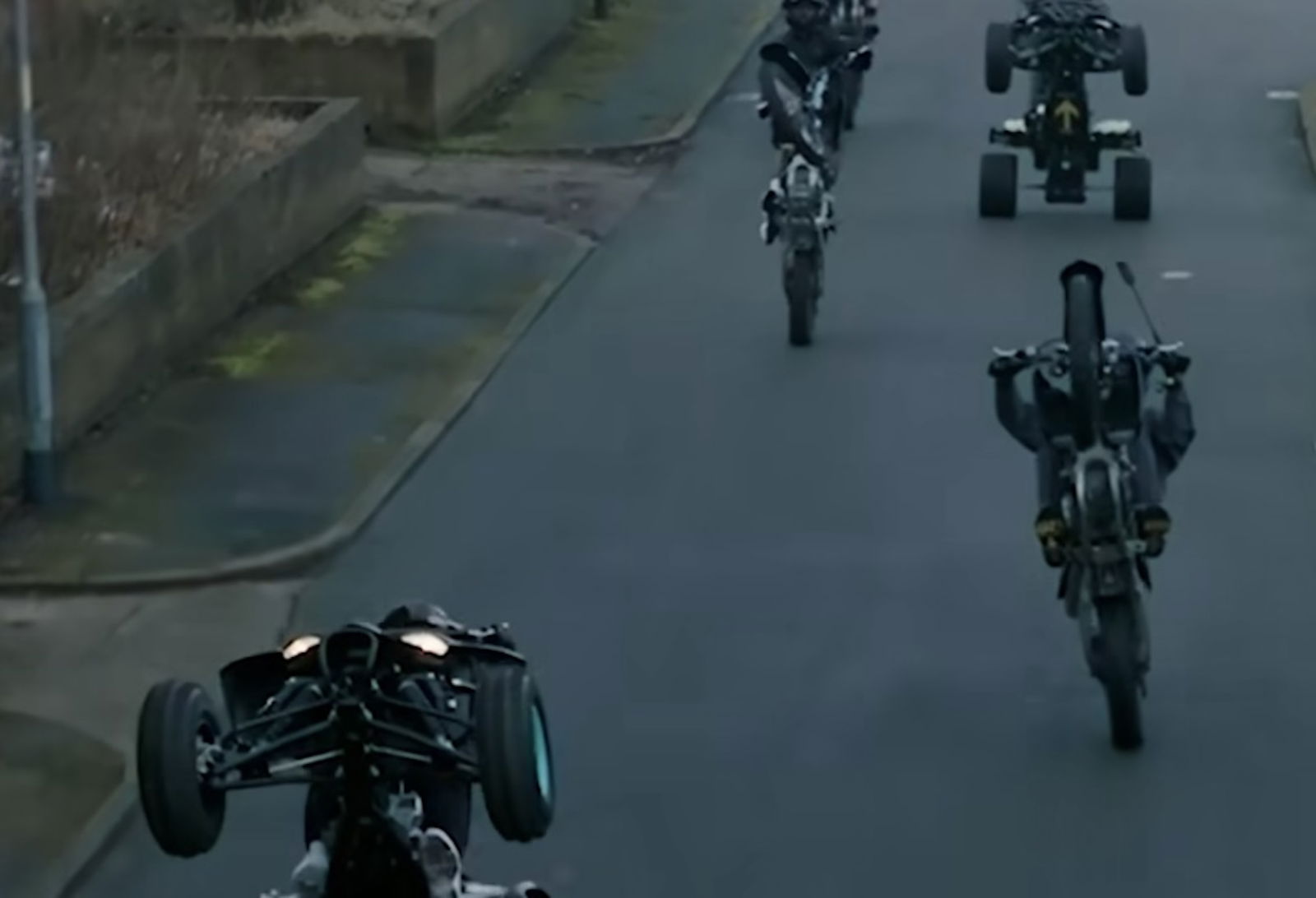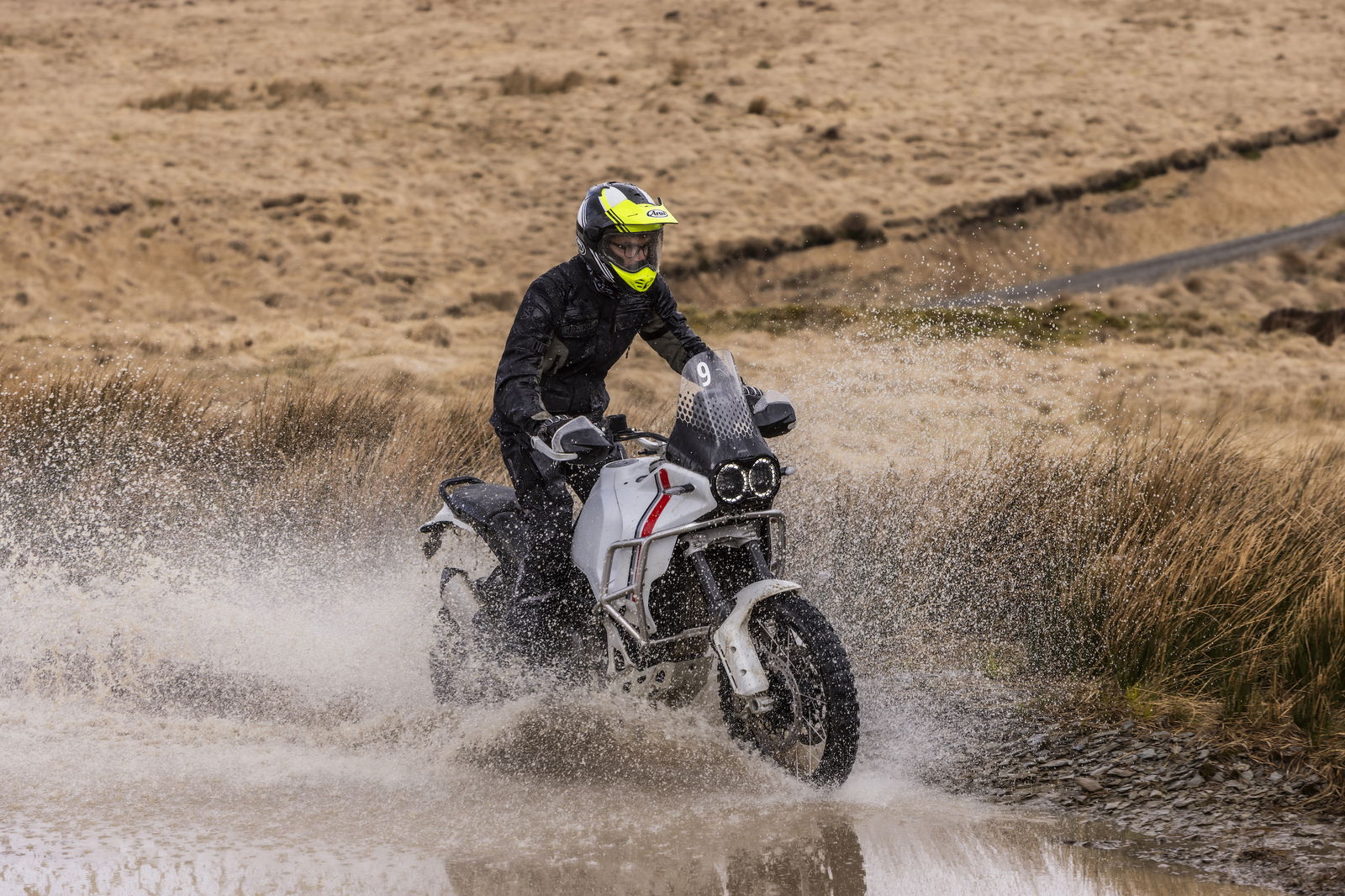What Can MotoGP Offer Liberty Media?
It’s always “what can Liberty Media do for MotoGP” and never “what can MotoGP do for Liberty Media”...

Liberty Media’s acquisition of Dorna Sports is still to be finalised, but the assumption of its completion is made with significant bias, especially with regard to MotoGP. The question of how Liberty can help MotoGP has seemingly been asked a billion times in the past week, but rarely has the question of what MotoGP offers Liberty been asked.
The reason for that is quite simple: F1, which Liberty bought in 2016, has a bigger audience than MotoGP, and therefore it’s a more successful series.
The reason for that larger audience is partly because of the way Liberty revolutionised F1’s media presence and marketing strategies when it took the series over from CVC Capital Investors in 2016. Since then, the once conservative, insular F1 has become a wide-open series full of colour, life, and, most importantly, distinctive characters.
Lewis Hamilton is not only a seven-times World Champion and winner of more than 100 Grands Prix, but also an activist on environmental and social matters, and a fashion icon (the second point is debatable depending on your taste, but the reality is people are into it). Guanyu Zhou is the first person from China to make a success out of being an F1 driver, and his driver character is fashion-focused like Hamilton’s, while Yuki Tsunoda is a fiery short king, and Valtteri Bottas has been turned from a monotone Finn into an honorary Aussie. Lando Norris is a big esports guy, Charles Leclerc is an Instagram poser and classical composer, and Max Verstappen is the ultimate win-obsessive ‘villain’. Even the team managers - Toto Wolff, Guenther Steiner (okay, not anymore), and even Ferrari’s Fred Vasseur, for example - have all had their character roles developed by F1’s narrative machine. That’s not to say that F1 is manufacturing stories, it just understands the personalities of the characters it has, partly because it has helped develop them.
Liberty had some help in this character development when it arrived in F1 because Hamilton was already dressing distinctively and, as the championship’s stand-out driver of the moment, was becoming more outspoken in the aforementioned social and environmental regards.
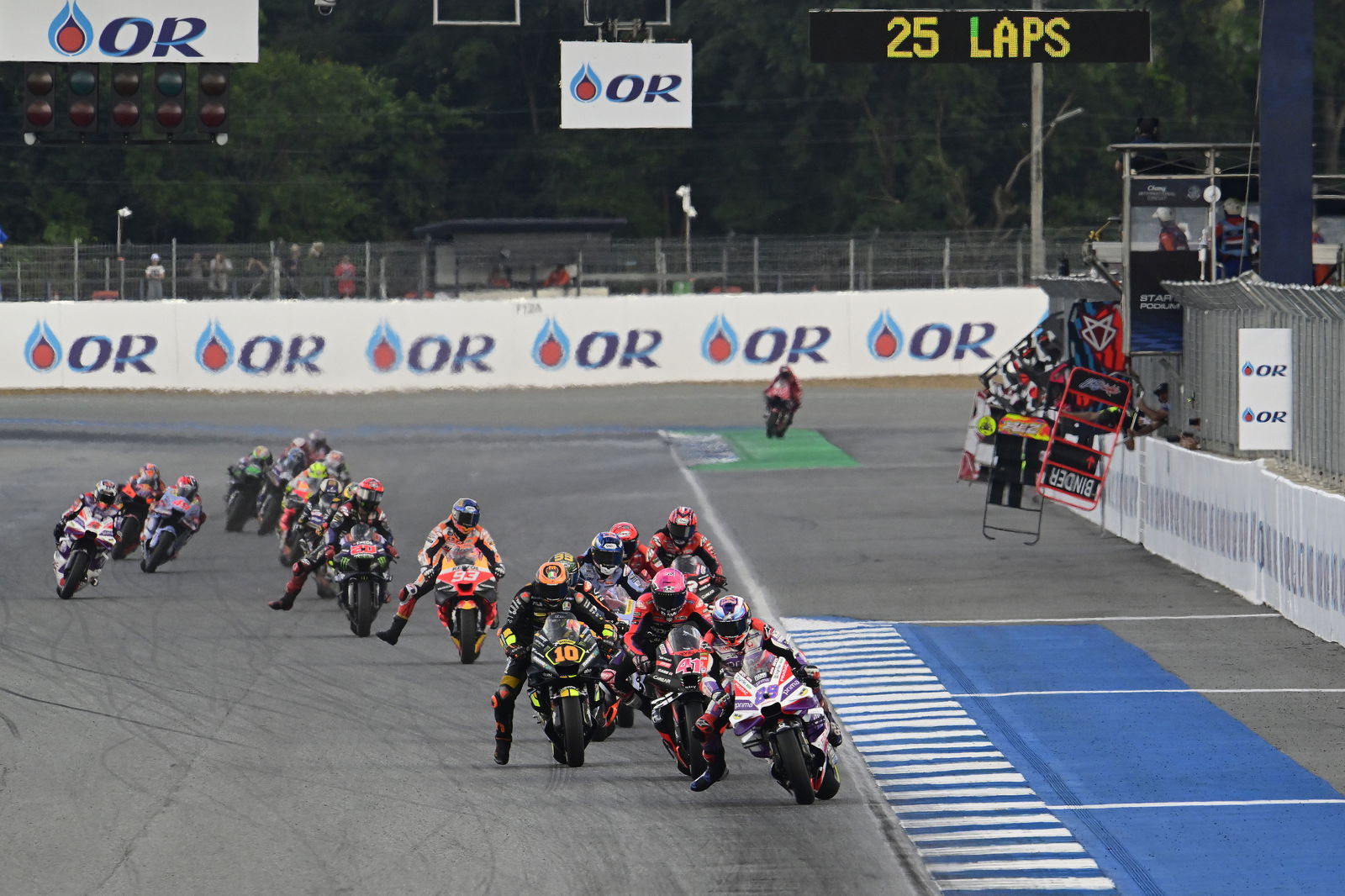
MotoGP fans always like to tell F1 fans that the racing in MotoGP is better than in F1. Mostly, they’re right to do so. Thailand, Australia, Germany, and Britain were all great races last year, for example, and you can go back through the years (especially since 2016) and pick out probably a couple of seasons’ worth of races you could watch over and over again. But, this year, it’s different. Through two GPs and four total races, there has been only one lead change after the first lap - Maverick Vinales taking it from Francesco Bagnaia in the Sprint at the Portuguese Grand Prix, but that doesn’t count as an overtake because Bagnaia ran wide all on his own. Vinales was simply in a position to take advantage.
Compared to WorldSBK, the MotoGP of 2024 looks barely any better than the MotoGP of 2010. Then, it was one-line 800s and evergreen Bridgestone tyres that led to poor racing. Now, it’s downforce aerodynamics, ride height devices, and a front tyre that is being overworked by both.
Poor racing is an issue that Liberty had to contend with when it arrived in F1, and one it has largely failed to solve. However, whether you consider it a failure of Liberty itself or not depends on whether you consider Liberty has an influence on the regulations of the championship, which dictate the racing, and are drawn up by the FIA in collaboration with the teams, which have to agree to the rules in order to compete. Either way, the racing in F1 was bad in 2016 and it’s not much better now despite several regulation changes with improved racing in mind (in 2019 and 2022 in particular).
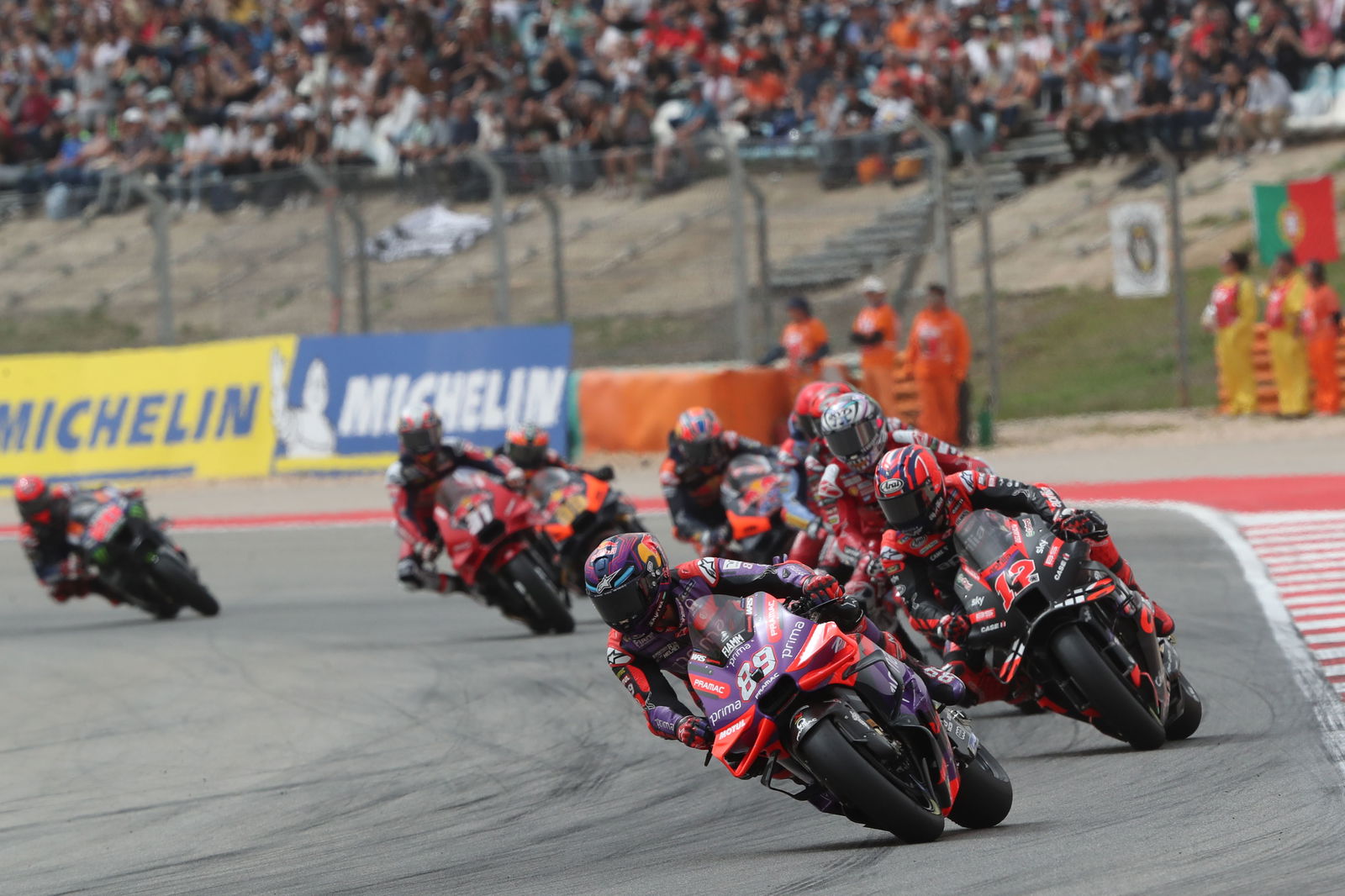
Is there much hope of MotoGP’s racing improving in the near future? A new front tyre from Michelin in 2025 might help, but you can guarantee that, as much positivity as there is about its prospective introduction, the new rubber will catch flak when it eventually does arrive, either being too hard, too soft, too inconsistent, or disrupting too much the order of setting up a MotoGP bike that the teams all understand quite well at the moment.
Other than the new tyre, the best hope for positive change is in 2027, when a new set of technical regulations will be introduced. It is almost certain that there will be a decrease in displacement from 1,000cc to 850cc, hopefully at the cost of horsepower more than torque, and we can hope for restrictions on downforce aerodynamics and bans on ride height devices. But nothing is guaranteed.
In the absence of good racing and motorcycles which are exciting to watch (i.e. that move around or slide), MotoGP needs characters. And, contrary to what many people say, it has them, it just doesn’t utilise them.

Jorge Martin rose through the ashes and the fires of hell (poverty) to look Francesco Bagnaia straight in the eye in last year’s MotoGP title fight. Bagnaia himself is a reserved guy but a product of Valentino Rossi’s academy. Luca Marini is into books. Aleix Espagaro is deeply passionate about the sport, but even more so about cycling - he also rides an electric Stark Varg instead of a combustion motocross bike and is one of the few dads on the grid. Miguel Oliveira is a dentist and speaks more languages than I’ve heard of. Marc Marquez is in the middle of what could be one of the sport’s greatest comeback narratives and (scary as it is to write) the primary advocate of ‘old school’ (as in, pre-downforce-aero) racing. Alex Marquez is a prankster. Fabio Di Giannantonio is a fashionista with a passion for motocross. Marco Bezzecchi is the personification of DGAF. Pedro Acosta is similarly carefree but currently comes with the added bonus of first-year generational talent, and will always come with a passion for road racing. And if you’re looking for a guy who simply loves rolling on two wheels, Jack Miller is your guy.
The team managers, too: the celebratory Davide Tardozzi, no-bullshit Alberto Puig, ever-smiling Davide Brivio, and many others. Let’s remember that F1 is not the only sport to make stars out of managers: football, both the European version and the handsy American version, have created distinctive figures out of the ageing men on the sidelines.
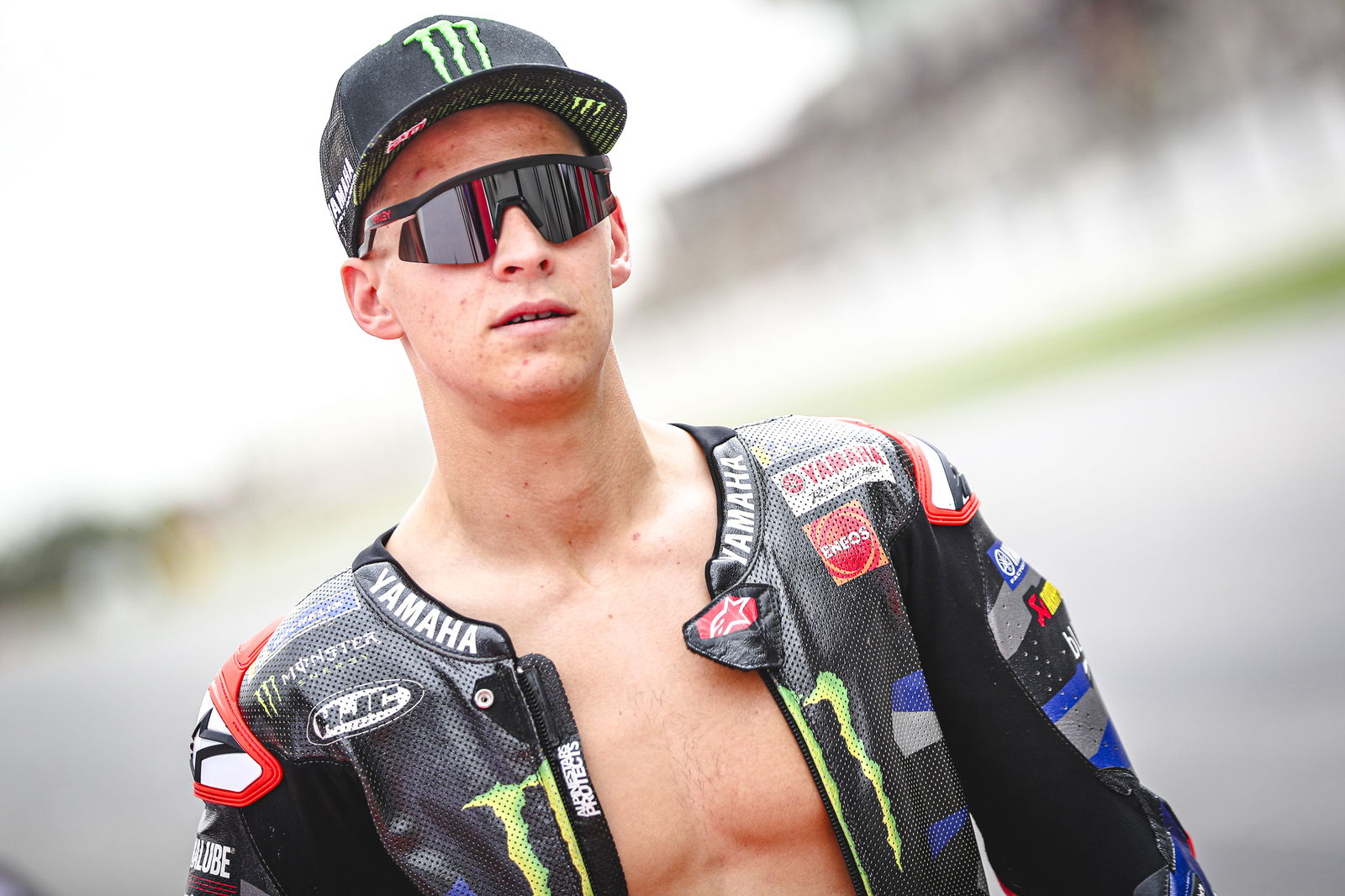
The characters are all there for Liberty to narrate and build into stars, and it will all be to the benefit of MotoGP.
It might sound scary to existing MotoGP fans that Liberty could do to MotoGP what it has already done to F1, but there is reason to believe that the result of the American firm’s strategies in MotoGP will be different to that they have achieved in F1.
In F1, many of the reasons for negativity surrounding the sport - races in problematic countries like Saudi Arabia, an over-inflated calendar, and an excessive focus on the events of the series away from the circuit in an effort to distract from the nothingness happening on it - can be condensed into one thing: commercialisation.
Liberty’s approach, in F1, has become so overtly about selling the championship rather than acknowledging the areas in which it is failing to make a good product that the entire thing feels more like a wealth flex with a race than something with sporting merit. Sure, sport is an entertainment product and the sports leagues and series’ which exist at the top of the tree of their respective disciplines have to consider that more than those lower down, but it should still feel like you’re watching something historic when a guy wins 20 races in 22. But Max Verstappen’s current run feels about as grand as a Big Mac.
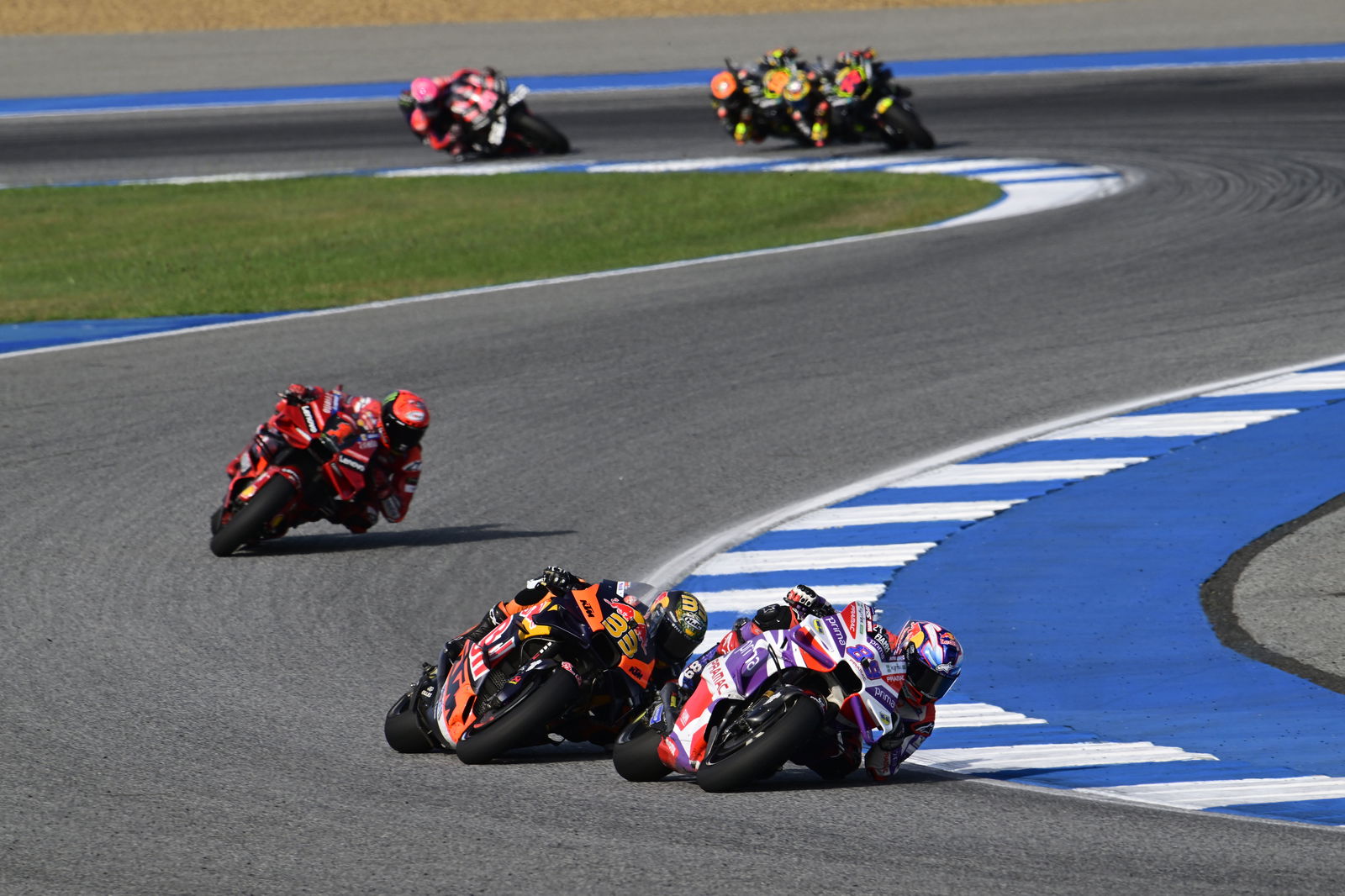
And this, potentially, is what MotoGP can offer Liberty Media: a series which can offer entertainment value and sporting merit. A revolutionary concept. The aforementioned fact about the lack of passes for the lead this year in MotoGP remains true, but Thailand was only last October.
We’ll see what the reality of racing in MotoGP 2024 is like once the series returns from the US - where it will race the Grand Prix of the Americas this weekend (12-14 April) - and gets into its proper European season, past the peculiarity of Lusail’s sandy nights, Portimao’s muddy hills, and COTA’s subsidence, patchwork, and layout-of-layouts. Then, we have to hope: first, that it’s not as bad as we think, second, that the 2025 Michelin front tyre does its job, and third, that the FIM does a good job of writing the 2027 technical regulations to limit downforce aerodynamics and outlaw ride height devices. I’ll let you decide which one of those sounds most like a farm animal west of Chester.
Find all the latest MotoGP news on Visordown.
